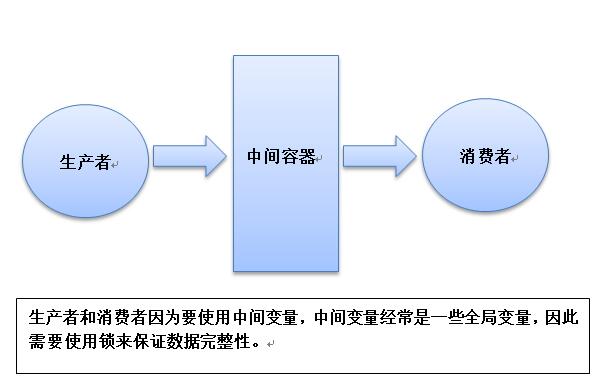13-多线程爬虫-Lock版的生产者和消费者模式
Lock版的生产者和消费者模式:
生产者和消费者模式是多线程开发中经常见到的一种模式。
生产者的线程专门用来生产一些数据,然后存放到一个中间变量中。消费者再从这个中间的变量中取出数据进行消费。
通过生产者和消费者模式,可以让代码达到高内聚低耦合的目标,程序分工更加明确,线程更加方便管理

# 生产者和消费者模式(生产者用来挣钱,消费者用来花钱) import threading import random # 全局变量 gMoney = 0 # 生成一个锁对象 gLock = threading.Lock() # 生产者生产的次数 gTimes = 0 class Producer(threading.Thread): # 告诉别人,这个函数只返回None def run(self) -> None: # 当前线程的对象 the_thread = threading.current_thread() global gTimes,gMoney while True: # 加锁 gLock.acquire() if gTimes >= 10: gLock.release() break money = random.randint(0,100) gMoney += money gTimes += 1 print("当前线程:{0}\t赚了{1}元,存款为{2}元".format(the_thread.name,money,gMoney)) # 释放锁 gLock.release() class Consumer(threading.Thread): def run(self) -> None: # 当前线程的对象 the_thread = threading.current_thread() global gMoney while True: # 加锁 gLock.acquire() money = random.randint(0,100) if gMoney >= money: gMoney -= money print("当前线程:{0}\t花了{1}元,存款为{2}元".format(the_thread.name,money,gMoney)) else: print("当前线程:{0}\t余额不足,预支付{1}元,但余额只有{2}元".format(the_thread.name,money,gMoney)) if gTimes >= 10: gLock.release() break # 释放锁 gLock.release() def main(): # 创建五个生产者进程 for x in range(5): thread_producer = Producer(name="生产者{}".format(x)) thread_producer.start() # 创建五个消费者进程 for y in range(5): thread_consumer = Consumer(name="消费者{}".format(y)) thread_consumer.start() if __name__ == "__main__": main()
执行结果


